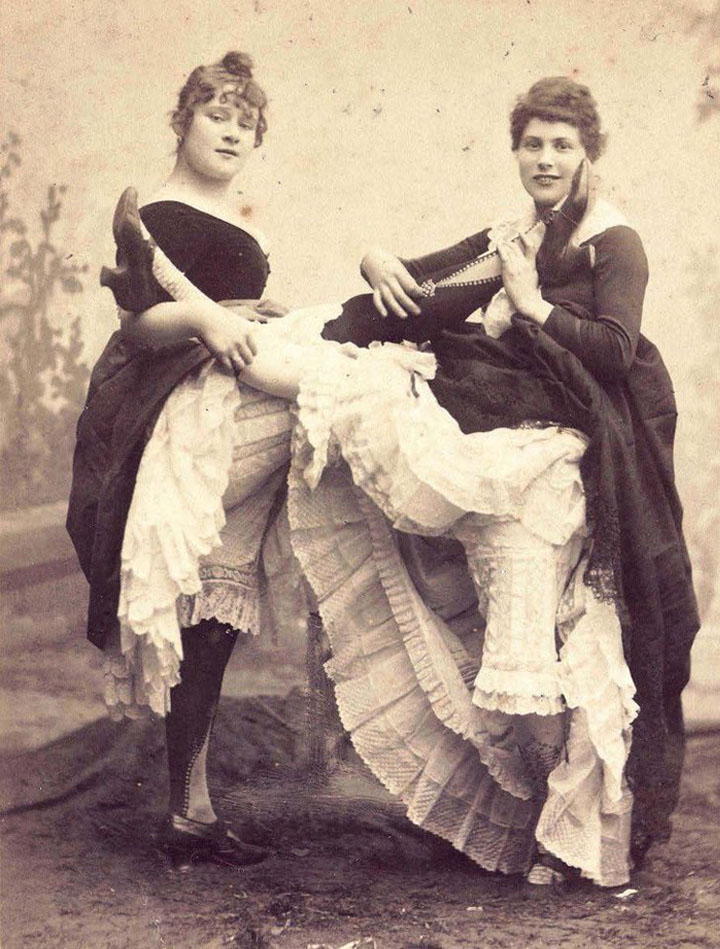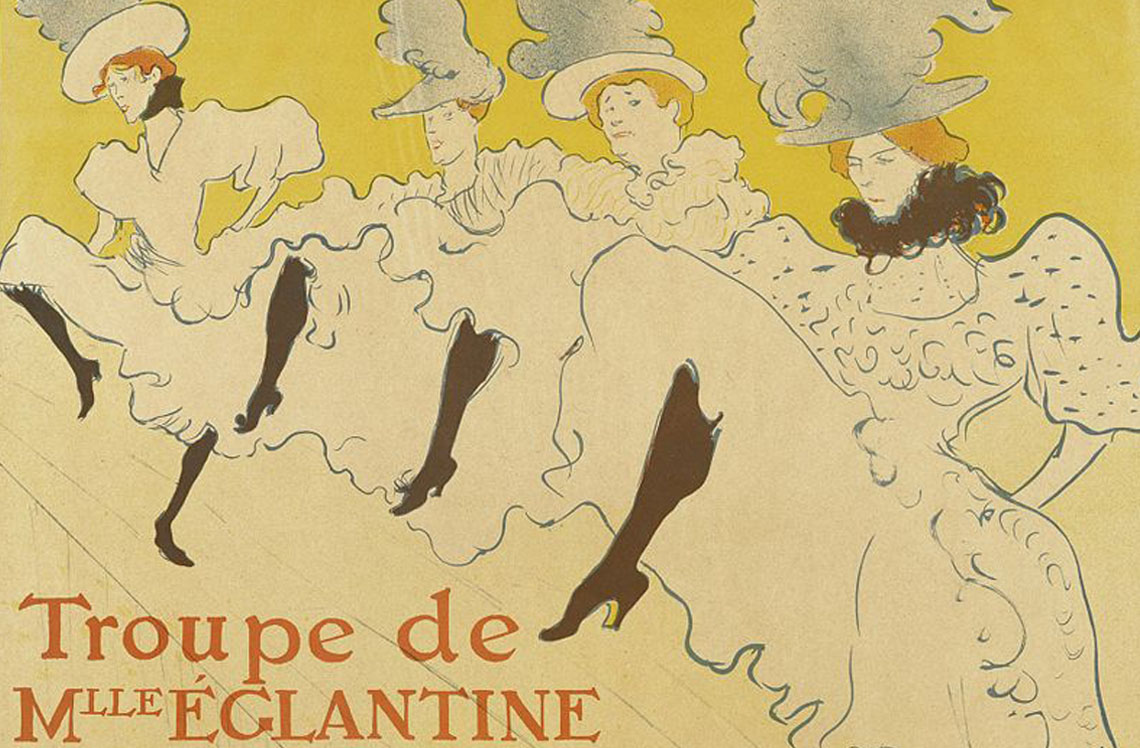In the second half of the 19th century, French Cancan dancers in Paris made this once-scandalous art form famous with their high kicks and exuberant energy. Independent and daring, these women helped pave the way for female emancipation—some even earned more than their male counterparts, an unprecedented achievement at the time.
Here’s a look at five of the most iconic “cancaneuses” and the colorful nicknames that became part of their legend.
Louise Weber, known as “La Goulue”
Born in 1866, Louise Weber, better known as La Goulue, began dancing as a teenager in popular Parisian dance halls. Of modest origins, she worked as a laundress while also posing for artists and photographers. Her charisma and talent soon caught the attention of cabaret owners, and she became a professional dancer.
From 1889 to 1895, she rose to stardom alongside her stage partner Valentin le Désossé, captivating Paris with her spirited personality and bold performances. Known for her daring neckline and mischievous charm, La Goulue became the darling of Belle Époque Paris and a muse to Toulouse-Lautrec, who immortalized her in his paintings.
A free and provocative woman, she was famous for walking through Montmartre with a goat on a leash, calling it her “male”—a cheeky jab at the patriarchal norms of her time, when French law still demanded that wives “obey their husbands.”
Her nickname, “La Goulue” (“the glutton”), is said to have come either from a former lover, Gaston Goulu-Chilapane, or from her habit of finishing customers’ drinks!
Jeanne Louise Beaudon, known as “Jane Avril”
Born into a troubled family, Jeanne Louise Beaudon endured an abusive childhood and was institutionalized at age 14 for nervous disorders. Released two years later, she found refuge in dance, which became both her passion and therapy.
Introduced to Paris’s dance scene by prostitutes who took her under their wing, she discovered her vocation at Bal Bullier, adopting the stage name Jane Avril. Her unique, twitch-like dance movements—partly inspired by her medical past—earned her the nickname “Jane the Crazy.”
In 1889, she became one of the queens of the cancan in Montmartre, rivaling La Goulue. She was granted special privileges—such as wearing colored petticoats while others had to wear white—and performed solo with a style that was frenzied yet elegant, never vulgar.
Cultured and sensitive, Jane Avril became both a close friend and muse of Toulouse-Lautrec, who painted her several times. She later helped spread the French Cancan across Europe with Mademoiselle Églantine’s troupe.
Marie Blanchard, known as “Nini Pattes-en-l’Air”
A talented dancer and stage partner of both La Goulue and Jane Avril, Marie Blanchard, nicknamed “Nini Pattes-en-l’Air” (“Nini Legs-in-the-Air”), was one of the first women to teach the cancan’s signature high kicks and splits to younger dancers.
Her informal “school,” however, drew police suspicion for supposed “immorality” and was eventually forced to close. Despite that, Nini Pattes-en-l’Air remained a beloved and daring figure in Montmartre’s cabaret world.
Lucienne Beuze, known as “Grille d’Égout”
Though less documented than her peers, Lucienne Beuze, alias “Grille d’Égout” (“Sewer Grate”), remains a key figure in the cancan’s history. Formerly a schoolteacher, she became one of the first choreographers and instructors of the dance.
Alongside Céleste Mogador, she is said to have trained and launched La Goulue’s career. Her unflattering nickname reportedly came from the gap between her teeth—but her influence on the art form was anything but small.
Amélie Badel, known as “Rigolboche”
Born in 1842, Amélie Marguerite Badel, better known as Rigolboche (a slang term meaning “funny” or “playful”), was one of the earliest stars of the French Cancan.
As a teenager, she performed in various dance halls, including Bal Mabille and Casino-Cadet, reaching the height of her fame around 1860. She was known for her elegance, energy, and boldness—and is often credited with inventing a now-classic cancan sequence of rhythmic leg kicks.
Her legend even inspired a French musical film, Rigolboche, directed by Christian-Jaque in 1936.
These pioneering women—artists, rebels, and icons of freedom—helped shape the Parisian cabaret into what it remains today: a place where passion, audacity, and artistry come alive every night.

La Goulue and Grille d’Égout
Free and rebellious, the French Cancan dancers left their mark on their century. They still fascinate today with their influence on women’s liberation and the contemporary entertainment world.
If you’re interested in attending a French Cancan show in Paris, the Paradis Latin, the oldest cabaret in the French capital, invites you to discover its revue “L’Oiseau Paradis.” This show, which inevitably features a French Cancan inherited from the one performed in the 19th century, combines tradition and modernity in a grandiose and colorful production!







